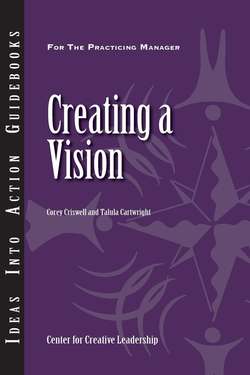Читать книгу Creating a Vision - Corey Criswell - Страница 10
На сайте Литреса книга снята с продажи.
ОглавлениеFive Building Blocks
Earlier in this guidebook we note that the content of your vision establishes an image of your organization: Is it strong? Headed in a good direction? A good place to work? Involved in something that is important?
A close look at our research reveals that a compelling vision includes five content elements:
• the big idea
• the values
• the story
• the growth factor
• the change factor
These five elements are not just important for the overall organizational vision, which is typically set by the senior leadership team. They are just as relevant for team leaders, project managers, group directors, and even individual contributors. Here’s why: Success in today’s organizations requires some level of shared direction, alignment, and commitment among people in the organization. The more complex or broad-based the work, the more reliant we are on collaborative processes of leadership.
In fact, at CCL we believe that direction, alignment, and commitment are the tasks of leadership. Direction is agreement on goals; alignment is coordination of work; commitment is dedication to the success of the organization. In many contexts, the starting point—direction—comes from a leader’s vision.
Whatever the size or scope of your work, leadership begins with defining and connecting to a vision.
The Big Idea
A colleague of ours was studying effective teams and was observing surgery at a regional hospital. One day when a heart bypass surgery was completed, a janitor came into the operation suite. Our colleague said hello and asked the man about his job. His reply? “Me and the doc, we help save lives.”
The janitor understood the big idea of the hospital, but more important, he was personally connected to it.
When a vision connects at a deep, fundamental, heart-filled place, people throughout the organization see that their work matters. The big idea provides overall direction to employees and guides their work toward long-term goals. It represents the idealized state of the organization. It speaks to the impact the work and the people have on others in the world. In our research, we refer to this as an “ideological goal.”
You may not be in the business of saving lives on a day-to-day basis, but what is the fundamental, enduring ideal on which your work is built? What is the big-picture purpose for your company, department, or project team? What inspires, motivates, and instills pride? The company’s mission statement may be a good place to look for the ideological goal.
